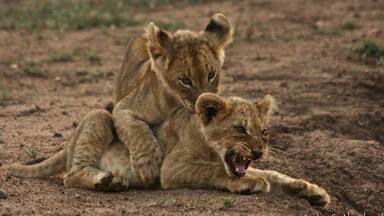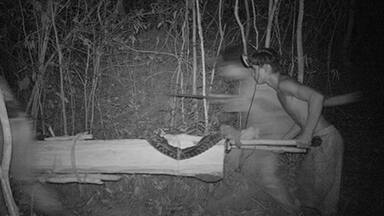Dong Phayayen-Khao Yai Forest Complex
Dong Phayayen-Khao Yai Forest Complex
The Dong Phayayen-Khao Yai Forest Complex spans 230 km between Ta Phraya National Park on the Cambodian border in the east, and Khao Yai National Park in the west. The site is home to more than 800 species of fauna, including 112 mammal species (among them two species of gibbon), 392 bird species and 200 reptile and amphibian species. It is internationally important for the conservation of globally threatened and endangered mammal, bird and reptile species, among them 19 that are vulnerable, four that are endangered, and one that is critically endangered. The area contains substantial and important tropical forest ecosystems, which can provide a viable habitat for the long-term survival of these species.
Description is available under license CC-BY-SA IGO 3.0
Complexe forestier de Dong Phayayen-Khao Yai
Le complexe forestier de Dong Phayayen-Khao Yai s’étend sur 230 km entre le parc national de Ta Phraya à la frontière cambodgienne à l’est, et le parc national Khao Yai à l’ouest. Le site est l’habitat de plus de 800 espèces de faune, parmi lesquelles 112 espèces de mammifères (dont deux espèces de gibbons), 392 espèces d’oiseaux et 200 de reptiles et d’amphibiens. Il est d’importance internationale pour la conservation des espèces de mammifères, d’oiseaux et de reptiles menacées et en danger sur Terre, parmi lesquelles 19 sont vulnérables, 4 en danger, et une en danger critique d’extinction. La zone contient des écosystèmes forestiers tropicaux de première importance, qui peuvent constituer un habitat viable pour la survie à long terme de ces espèces.
Description is available under license CC-BY-SA IGO 3.0
مجمّع دونغ فايايين كاو ياي الحرجي
يمتد مجمع دونغ فايايين – كاو ياي الحرجي على 230 كيلومترا بين منتزه تا فرايا الوطني عند الحدود الكمبودية شرقاً ومنتزه كاو ياي الوطني غرباً. وهو يشكل موطناً لأكثر من 800 صنف من الحيوانات التي تشمل 112 فصيلة من الثدييات (منها فصيلتان من قرود الغيبون) و392 صنفاً من الطيور و200 صنف من الزواحف والضفدعيات. ويتسم هذا المجمع بأهمية دولية في ما يختص بالحفاظ على أصناف الثدييات والطيور والزواحف المهددة على الأرض والتي تشمل 19 صنفاً مهدداً و4 أصناف معرضة للخطر وصنف واحد يواجه خطر الانقراض. وتتضمن المنطقة انظمة بيئية حرجية مدارية فائقة الأهمية وكفيلة بتشكيل موطن قابل للاستمرار من أجل حفظ هذه الأصناف على الأمد الطويل.
source: UNESCO/CPE
Description is available under license CC-BY-SA IGO 3.0
东巴耶延山-考爱山森林保护区
东巴耶延山-考爱山森林保护区横跨在柬埔寨东部边缘的巴耶延国家公园和西部的考爱山国家公园之间,绵延230公里。这里是100米到1351米高的崎岖山区,总面积615 500公顷,其中有7500公顷在海拔1000米以上。北部由孟河的几条支流汇聚而成,其本身也是湄公河的支流。南边是许多瀑布、河谷和由四个溪流汇聚而成的巴真武里河(Prachinburi River)。这里栖息着800多个动物种群,其中有112种哺乳动物(长臂猿类有两种)、392种鸟类,200种爬行和两栖类动物。保护世界上受到威胁和濒危哺乳动物、鸟类和爬行动物具有全球性的重要意义。这其中有19种动物易受危害,4种动物处于濒危状态,还有1种受到严重威胁。这一地区包含丰富而重要的热带森林生态系统,为这些动物的长期生存提供了一个适宜的栖所。
source: UNESCO/CPE
Description is available under license CC-BY-SA IGO 3.0
Лесной комплекс Донгфаяйен-Кхауяй
Этот лесной массив простирается на 230 км. На востоке он соседствует с национальным парком Тафрайя, лежащим на границе с Камбоджей, а на западе примыкает к национальному парку Кхауяй. Пересеченный гористый рельеф имеет высоты в диапазоне 100-1351 м, причем 7,5 тыс.га (из общей площади 615,5 тыс.га) располагаются выше уровня 1000 м. Северная часть территории дренируется притоками реки Мун, впадающей затем в Меконг, а южная часть массива со множеством живописных ущелий и водопадов дренируется четырьмя притоками реки Прахинбури. В лесах зафиксировано более 800 видов животных, включая 112 видов млекопитающих (в т.ч. два вида гиббонов), 392 – птиц и 200 – рептилий и амфибий. Среди глобально редких видов млекопитающих, птиц и рептилий 19 относятся к категории «уязвимые», четыре вида – «исчезающие», а один вид определен как «находящийся в критическом состоянии». Выживание этих редких животных оказалось возможным только благодаря здешним обширным тропическим лесам.
source: UNESCO/CPE
Description is available under license CC-BY-SA IGO 3.0
Complejo forestal de Dong Phayayen – Khao Yai
Este complejo forestal se extiende a lo largo de 230 km, en dirección este-oeste, desde el Parque Nacional de Ta Phraya, situado no lejos de la frontera con Camboya, hasta el Parque Nacional de Khao Yai. Alberga más de 800 especies animales, entre las que se cuentan 112 de mamíferos (con dos clases de gibones), 392 de aves y 200 de reptiles y anfibios, y reviste una gran importancia para la conservación de algunas que se hallan amenazadas a nivel mundial. Entre estas últimas hay una en peligro crítico de extinción, cuatro amenazadas y diecinueve vulnerables. El complejo forestal posee un abundante número de ecosistemas importantes de bosque tropical susceptibles de ofrecer un hábitat viable para la supervivencia de esas especies animales a largo plazo.
source: UNESCO/CPE
Description is available under license CC-BY-SA IGO 3.0
ドン・パヤーイェン‐カオ・ヤイ森林群
source: NFUAJ
Dong Phayayen-Khao Yai boscomplex
Source: unesco.nl
Outstanding Universal Value
Brief synthesis
Home to more than 800 species of fauna and located in northeast Thailand, Dong Phayayen-Khao Yai Forest Complex (DPKY-FC) covers 615,500 hectares and comprises five almost contiguous Protected Areas; Khao Yai National Park, Thap Lan National Park, Pang Sida National Park, Ta Phraya National Park, and Dong Yai Wildlife Sanctuary. The complex spans 230 kilometers from Ta Phraya National Park on the Cambodian border in the east and Khao Yai National Park at the western end of the complex. It lies in an east-west alignment along and below the Korat Plateau, the southern edge of which is formed by the Phanom Dongrek escarpment. The property falls inside the Central Indochina biogeographic unit and borders the Cardamom Mountains biogeographic unit. The complex also lies at the edge of the Tropical and Subtropical Moist Broadleaf Forest (WWF Global 200 Ecoregion 35) and the Indochina Dry Forest (Ecoregion 54).
Internationally important for its biodiversity and the conservation of globally threatened and endangered mammal, bird and reptile species, the property is home to one critically endangered (Siamese Crocodile), four endangered (Asian Elephant, Tiger, Leopard Cat, Banteng) and 19 vulnerable species. The property protects some of the largest remaining populations in the region of many important wildlife species and is the only known location where White-headed and Pileated Gibbon species have overlapping ranges and interbreed.
The Dong Phayayen-Khao Yai Forest Complex, with its high annual rainfall, acts as a critically important watershed for Thailand, draining into and feeding five of the country’s major rivers: Nakhon Nayok river, Prachin Buri river, Lamta Khong river, Muak Lek river, and Mun river. The waterfalls and creeks within the property, together with the variety of flora and fauna and dramatic forested landscapes, attract millions of visitors every year for recreation and education purposes.
Criterion (x): The Dong Phayayen-Khao Yai Forest Complex (DPKY-FC) contains more than 800 fauna species, including 112 species of mammals, 392 species of birds and 200 reptiles and amphibians. The property is internationally important for the conservation of globally threatened and endangered mammal, bird and reptile species that are recognised as being of outstanding universal value. This includes 1 critically endangered, 4 endangered and 19 vulnerable species. The property contains the last substantial area of globally important tropical forest ecosystems of the Thailandian Monsoon Forest biogeographic province in northeast Thailand, which in turn can provide a viable area for long-term survival of endangered, globally important species, including tiger, elephant, leopard cat and banteng. The unique overlap of the range of two species of gibbon, including the vulnerable pileated gibbon, further adds to the global value of the complex. In addition to the resident species the complex plays an important role for the conservation of migratory species, including the endangered Spot-billed Pelican and critically endangered Greater Adjutant.
Integrity
Comprising five almost contiguous protected areas and spanning 230 km between Ta Phraya National Park on the Cambodian border in the east and Khao Yai National Park to the west, the boundaries of Dong Phayayen-Khao Yai Forest Complex follow contour lines that were originally drawn around remaining areas of forest and natural habitats, resulting in a well defined but complicated boundary. The overall size of the property adequately ensures complete representations of habitats and ecological processes, and with-well defined topographic, climatic and vegetal east-west gradients, it contains all major habitat types of eastern Thailand. Maintaining and re-establishing connectivity between the different ecological components of the complex remains a concern and a priority for the managing agency due to its direct impact on the integrity and value of the property.
More than 80% of Khao Yai National Park remains covered in evergreen or semi-evergreen forest, with much of it tall, good quality primary forest. There are significant areas of primary forest in each of the component protected areas of the complex, with moist and dry evergreen forests occurring in all the Protected Areas of the complex. Overall, the property represents a complex mosaic of all vegetation and habitat types remaining in northeast Thailand, including rainforest habitats, reflecting not only successional processes but also landform and soil diversity. As the last major area of extensive forests in northeastern Thailand, surrounded by almost completely converted landscapes, human pressures are significant and diverse including roads, incursions, tourism, and poaching. In some areas along the boundary, significant incursion and agricultural conversion have occurred and the lack of a clear external buffer zone results in competing land uses, bordering directly onto the property boundary.
Protection and management requirements
The Dong Phayayen-Khao Yai Forest Complex, consisting of four National Parks and one Wildlife Sanctuary, is the property of the Government of Thailand and is covered by strong legislation covering both National Parks and Wildlife Sanctuaries. The four National Parks - Ta Phraya, Thap Lan, Pang Sida and Khao Yai - were declared under the National Parks Act B.E 2504 (1961) and the Dong Yai Wildlife Sanctuary was declared under the Wild Animal Reservation and Protection Act B.E. 2535 (1992). The Department of National Parks, Wildlife and Plant Conservation (DNP) currently manages both National Parks and Wildlife Sanctuaries and the complex is administered by two regional administration offices under the supervision of the World Heritage Committee set up by the DNP.
To protect the ecology and meet the management objectives of the property on recreation, research, and public education, while conserving the values, for which the property was inscribed, the management plan for Dong Phayayen-Khao Yai Forest Complex was put in place. In addition, Protected Areas Committees, comprised of representatives from the management agency, local communities and stakeholders, have been set up to advise on the implementation of the management plan, including issues related to public participation in protected areas management. To maintain long-term conservation of natural resources and keep ecosystems in Dong Phayayen-Khao Yai Forest Complex intact and healthy, the Thai Government has committed to on-going investment in enhancing protection in the property, including the provision of adequate staffing numbers, equipment and annual budgetary allocation.
Impacts from road use and development, tourism, poaching, and land incursion, conversion and separation are significant threats to long-term conservation of the property. Heavy use on existing roads and resulting development present potential threats to the natural values of the complex, separating important areas within the complex and creating barriers to maintaining connectivity. To assist in addressing these issues, the Thai Government and managing agencies are taking positive measures such as creating connectivity corridors, building up community conservation awareness, and enforcing legislation and laws.
Impacts from increasing tourism, especially during peak visitation periods, often place intense pressure on facilities and management, especially within Khao Yai National Park, which receives considerably higher numbers of visitors than other sections of the complex. Implementing complex-wide tourism plans, setting limits on the number of people allowed in the park and alternative strategies to bring people into the area are being investigated and developed to deal with the increasing pressures from tourists.




